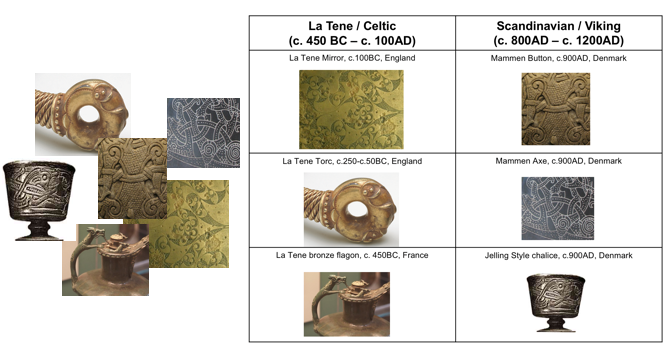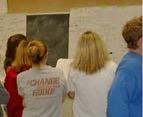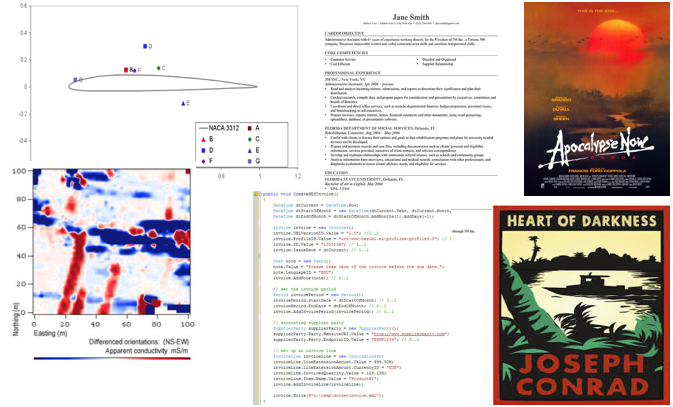Effective Group Discussion Activity Design
Effective group discussion activities do not require groups to produce a complex product like authoring a paper or making a presentation. Writing and presenting are inherently individual tasks—when groups are assigned these tasks, they divide-and-conquer, focusing on production and not discussion.
In contrast, effective group discussion activities give groups a curated collection of information and require them to make a difficult disciplinary decision, like a courtroom jury is given a great deal of complex information and asked to render a “guilty or not guilty” decision.
4-S “Make-A-Specific Choice” Activities
(adapted from Sweet and Michaelsen, 2012)
These activities take the form “Given X, groups must decide Y.” Of course, X and Y will vary based upon your learning goals for the activity, but a few basic principles can help you design powerfully-effective learning activities in any discipline. Each of these principles starts with the letter S, so they have come to be called “4-S activities.” 4-S activities revolve around the four following principles:
- Significant problem
Students should work on a problem, case, or question demonstrating a concept’s usefulness so they understand its impact. These are application problems. Instead of asking students to discuss some abstract set of conceptual distinctions, embed those distinctions within a set of concrete circumstances. This is how you position students as “cognitive apprentices” in your discipline—forcing them to start making the choices that people in your discipline make. - Specific choice
The activity must require groups to use course concepts to come to consensus and make a decision. Examples could include: Should the company buy, lease, or rent their trucks? Which essay is the best example of historicism? What’s the most vulnerable part of this design? Which of the following statements would an author most strongly disagree with?. Groups can be required to generate short, written rationales for their choice but groups must first be required to take a position. - Same problem
Groups should all work on the same problem, case, or question so they will care about what other groups think about it and engage each other around the course content. This creates conditions for fruitful inter-group discussion. - Simultaneous reporting
If possible, groups should report choices at the same time so differences among group conclusions can be explored and are not smoothed out by “answer drift” in which a few of the same (potentially incorrect) answers delivered first wind up swaying the whole room. It can be a powerful instructional experience when a minority of students in the room actually come to a better answer than the rest.
Examples of 4-S Activities
Scenario + Multiple-Choice Question
This is a common format to get discussions moving with energy.
For example, “You are a paramedic at the scene of an accident where a 37 year old woman has some specific damage to her abdomen: do you put her in the ambulance (a) on her back, (b) on her side, or (c) sitting up?” After a fruitful discussion, you can layer the scenario with new information: “Now she’s six months pregnant—does that change your answer?” A visible quiz is a common method for simultaneous report.
Pinpointing
This involves presenting groups with some complex “text”—e.g., an image, graph, resume, computer code, book or film—the possibilities are limitless. Then groups must come to consensus on a specific point within that text as the very best example of something.
At which point around an airfoil are certain forces maximized?
What’s the most likely site for infection?
What piece of the resume or code is the weakest?
What moment in the book or film is the best example of “magic realism”?
Sorting

This technique requires many specific decisions by requiring groups to come to consensus on categories, sequence, or priorities. This requires a series of specific decisions.
For example, groups might receive pictures of Celtic and Viking artifacts, and have to sort them into categories by culture, and sequence by age. A nursing class might get pictures of normal and abnormally developed infants across several ages.
Gallery Walks
These are a two-stage activity: groups first produce something poster-like in response to a prompt. 
In the second stage of the Gallery Walk activity, groups make specific decisions about the work of other groups, often in the form of placing post-its on other teams’ posters in specific places.
This is the group consensus activity. For example: what piece of another other teams’ work is the strongest or the most questionable?
Download the Group Discussion Activities brochure.
THE “FATAL FLAW” WITH MOST GROUP PROJECTS
Most group projects have a fatal flaw built into the structure of the assignment itself. This video reveals how that flaw manifests in the lives of you and your students, and offers concrete recommendations for how to avoid it.
References
Sweet, M. & Michaelsen, L.K. (2012). Team-Based Learning: Group Work That Works for Critical Thinking and Engagement. Sterling, VA: Stylus.
Interested in exploring further? Check out all of our CATLR Teaching Tips or upcoming events. Then meet with a CATLR consultant to discuss your questions and ideas! To schedule a consultation, email [email protected] or call +1.617.373.3157.

